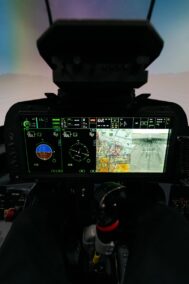Revolutionizing Disaster Response Through Real-Time Data
The integration of IoT-based public safety solutions has emerged as a groundbreaking advancement in disaster preparedness and response. These solutions leverage Internet of Things (IoT) technology to provide real-time data that is crucial for enhancing the effectiveness of emergency management strategies. By deploying a network of interconnected sensors and devices, public safety agencies can monitor environmental conditions, track hazardous incidents, and assess damage in real-time. This immediate access to data enables more informed decision-making, allowing for quicker and more accurate responses to crises. For example, IoT sensors can detect early signs of natural disasters such as earthquakes or floods, providing crucial alerts that help in mobilizing resources and implementing evacuation plans in a timely manner.
Moreover, the real-time data provided by IoT-based solutions plays a vital role in improving coordination among various emergency services. During a disaster, effective communication between police, fire departments, and medical teams is essential. IoT systems facilitate seamless data sharing and communication, ensuring that all relevant parties are aware of the current situation and can act in concert. This interconnected approach helps to eliminate information silos and reduces the risk of duplication of efforts, thus optimizing resource allocation and response strategies. Additionally, the integration of IoT data with other technologies, such as Geographic Information Systems (GIS), further enhances situational awareness and operational efficiency.
Predictive Analysis and Improved Resource Management
One of the most significant advantages of IoT-based public safety solutions is their ability to facilitate predictive analysis. By continuously collecting and analyzing data from various sources, these systems can identify patterns and trends that may indicate potential future threats. For instance, IoT sensors can monitor weather conditions and environmental changes to predict the likelihood of severe weather events or hazardous material spills. This predictive capability allows emergency services to prepare and respond proactively rather than reactively. By anticipating potential issues, agencies can develop and implement preventive measures, conduct drills, and allocate resources more efficiently, ultimately reducing the impact of disasters on communities.
In addition to predictive analysis, IoT-based solutions also enhance resource management during disaster response. The ability to track and monitor resources in real-time enables more effective deployment and utilization. For example, IoT devices can track the location and status of emergency response vehicles, medical supplies, and personnel, ensuring that resources are used where they are most needed. This real-time visibility helps to avoid shortages or misallocation of resources, which can be critical during large-scale emergencies. Furthermore, the data collected by IoT systems can be used to evaluate the effectiveness of response efforts and identify areas for improvement, contributing to ongoing enhancements in disaster management practices.
Challenges and Future Directions for IoT-Based Public Safety Solutions
Despite their numerous benefits, IoT-based public safety solutions also face several challenges that need to be addressed to maximize their effectiveness. One of the primary concerns is data security and privacy. The vast amount of data collected by IoT sensors is highly sensitive and could be vulnerable to cyberattacks. Ensuring robust security measures and implementing encryption protocols are essential to protecting this data and maintaining public trust. Additionally, the integration of diverse IoT devices and systems can lead to interoperability issues. Standardizing protocols and ensuring compatibility among various technologies will be crucial for achieving seamless operation and data sharing.
Looking ahead, the future of IoT-based public safety solutions promises further advancements and innovations. Emerging technologies such as artificial intelligence and machine learning are expected to enhance the capabilities of IoT systems, enabling more sophisticated data analysis and decision-making. The development of next-generation IoT devices with improved accuracy and reliability will also contribute to more effective disaster preparedness and response. Collaboration between technology providers, public safety agencies, and government bodies will be key to overcoming existing challenges and leveraging the full potential of IoT-based solutions in safeguarding communities against disasters.
—
#IoT #PublicSafety #DisasterPreparedness #EmergencyManagement #RealTimeData #PredictiveAnalysis #ResourceManagement #ModernTechnology































